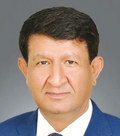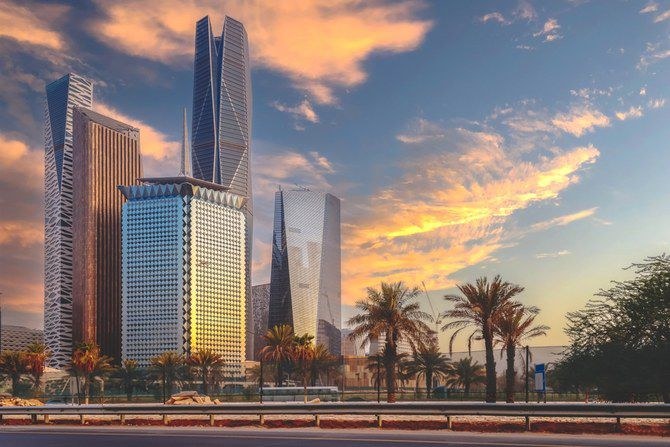Crown Prince Mohammed bin Salman launched Vision 2030 on April 25, 2016 as a strategic plan to achieve three intertwined goals: diversifying the Saudi economy away from oil, modernizing the society at par with cultural traditions, and enhancing the Kingdom’s global profile. Midway through its implementation, Vision 2030 has made remarkable progress in each sphere.
This is amply clear from the current levels of Saudi economic growth and social empowerment as well as its proactive role in regional and global politics. Of course, it is a dream come true for Saudi nation, especially for the Vision’s key beneficiaries — the youth and the women, constituting the bulk of the population. This was, anyway, one of the key underlying motives behind its launch.
National vision programs often remain on paper, unless the leaders who drive them possess the insight into the present realities driven by history and the foresight into a reimagined future and its opportunities. As the architect of Vision 2030, the crown prince is pioneering this pathbreaking role in proud Saudi history.
While kickstarting this promising journey seven years ago, he announced: “Our vision is a strong, thriving and stable Saudi Arabia ... with Islam as its constitution and moderation as its method.”
The bedrock of Saudi success, he declared, would be “moderation, tolerance, excellence, discipline, equity and transparency.” With patience, persistence and precision, the young Saudi leader has maintained the momentum of change ever since.
Today, while it is worth discussing the rationale of his vision and its transformative impact on society, economy and foreign policy, we cannot overlook the formidable challenges his dynamic leadership has faced at the start and along the way.
As the Saudi economy grows, Vision 2030 may not only be able to overcome the progress lag caused by the pandemic, but also realize fast-paced progress in achieving its remaining targets.
Ishtiaq Ahmad
The Arab Spring uprisings brought to fore lurking danger: the youth bulge, particularly the urgency of addressing youthful aspirations for economic and social empowerment. It could not be tackled with an economy financed by oil revenues and offering limited public sector employment. The external environment was equally challenging — the Yemen war, Daesh terrorism and Iranian aggression to say the least.
Vision 2030 was launched under these compelling circumstances, to ensure Saudi Arabia’s status as the heart of the Arab and Islamic worlds; its determination to become a global investment powerhouse; and transforming its unique strategic location into a global hub connecting three continents, Asia, Europe and Africa.
The three strategic pillars mentioned in the crown prince’s message underpinning these goals — a vibrant society, a thriving economy and an ambitious nation — are being achieved through 11 Vision Realization Programs. Each program mentions specific targets to be achieved through three five-year National Transformation Programs by 2030.
The first pillar, which has driven the social reformation process, sought to increase household spending on cultural and entertainment activities from 2.9 percent to 6 percent and raise the Saudi ranking from 26 to 10 in the world’s Social Capital index.
The second pillar, which is driving the economy away from oil, sought to reduce unemployment from 11.6 percent to 7 percent, and raise the share of non-oil exports in non-oil gross domestic product from 16 percent to 50 percent, the private sector’s contribution from 40 percent to 65 percent of GDP and foreign direct investment from 3.8 percent to 5.7 percent of GDP.
The third pillar, meant to enhance governmental efficiency and national competitiveness, sought to raise the Saudi ranking in the Government Effectiveness Index from 80 to 20 and in the E-Government Survey Index from 36 to be among top five nations
The reforms have touched almost every aspect of social life, public and private, spanning sports, tourism, entrainment, arts and culture, and much more. Where women could not drive till 2018, now education, work and public spaces are open to them. In 2022, female labor participation in Saudi Arabia reached 37 percent of the national workforce, well ahead and above the 30 percent target sought for 2030. Youth unemployment has significantly declined, and the overall unemployment rate dropped 8 percent, just 1 percent less than Vision 2030’s target, which is 7 percent.
Vision 2030 has also achieved tangible progress in weaning the economy away from overbearing dependence on oil as a key source of national revenue. The Kingdom’s economic recovery and growth in the aftermath of the global pandemic has particularly helped to meet the desired targets in giga-development projects, such as the futuristic NEOM city worth $500 billion, which will have zero carbon emissions. Non-oil trade with China and the rest of the world is increasing each financial year. A young and educated population is steering the expansion of the private sector. Small and medium-sized enterprises have seen enormous expansion over the years.
In order to become a hub of global tourism, the Kingdom wants to attract 100 million tourists annually by 2030, with planned investment of $1 trillion in the tourism sector under the National Tourism Strategy. Major entertainment, heritage and cultural sites, such as Qiddiya, near Riyadh, AlUla in the northwest, and Al-Soudah in the Asir region, have been developed for that purpose. Travel facilitation steps, including extensive digitization of services, have made a visible impact in raising the number of Hajj and Umrah visitors from across the Muslim world. In particular, despite the coronavirus pandemic, some 120 million local and foreign tourists have visited Saudi Arabia since 2019.
The Kingdom’s consistent rise in key international rankings is another barometer to assess the performance of Vision 2030. Thanks to its transformative impact on social conditions of the people, including basic amenities such as housing, health and education, the Kingdom was ranked the third-happiest country in the Arab World in the 2002 World Happiness Report. Saudi Arabia has also doubled its score in the World Bank’s Women, Business and the Law Index from 31.9 in 2016 to 80 in 2022.
Saudi Arabia was placed sixth in the World Competitiveness Yearbook 2022 peer group rankings’ attitude and values category, which assesses the global competitiveness of 63 countries on four indicators — economic performance, government efficiency, business efficiency and infrastructure. The Kingdom also jumped 15 spots in the Global Innovation Index 2022 of the World Intellectual Property Organization. In the higher education sector, the 2030 target was to have five Saudi universities ranked in the top 200 Times Higher Education world university rankings. In 2022, 22 universities made the list.
The Kingdom plans to invest $7 trillion to implement Vision 2030, with the bulk of funding coming from its expanding sovereign wealth fund, Public Investment Fund, currently worth of around $650 billion, and the private sector, including Saudi Aramco and the petrochemical firm SABIC. Foreign direct investment will be a major source in this respect. The Kingdom has organized Future Investment Initiative Conference each year since 2018, attracting thousands of major business and corporate leaders from the US, Europe and the rest of the world. Consequently, the FDI volume has doubled over the past seven years, reaching $640 billion in 2022.
The Kingdom is naturally endowed with multiple diplomatic roles as the leading Gulf state, the richest Arab country, the center of gravity for the world of Islam, and the mover and shaker of global energy markets. Owing to this distinctive regional and global status, Saudi Arabia always seeks peace, stability and progress beyond borders.
Vision 2030 faced formidable challenges predating its launch in 2016, which worsened in subsequent years due to the Yemen war; Iran’s aggressive role, stirring conflicts in Iraq, Syria, Lebanon and Palestine; the unfortunate rift in among the GCC nations; and the eruption of tension in relations with the US — all this amid the global pandemic, which had a devastating impact on the economy. But the crown prince showed exemplary leadership during these trying times by diversifying and deepening economies relations with Asia, especially China. He was able to pacify the US leadership, and even extended an olive branch to Iran. These sincere efforts eventually bore fruit.
As the Saudi economy grows, Vision 2030 may not only be able to overcome the progress lag caused by the pandemic, but also realize fast-paced progress in achieving its remaining targets.
• Ishtiaq Ahmad is a member of the Planning Commission of Pakistan. A former journalist, he previously served as the vice chancellor at Sargodha University, Pakistan, and the Jinnah Chair at Oxford University in the UK.












